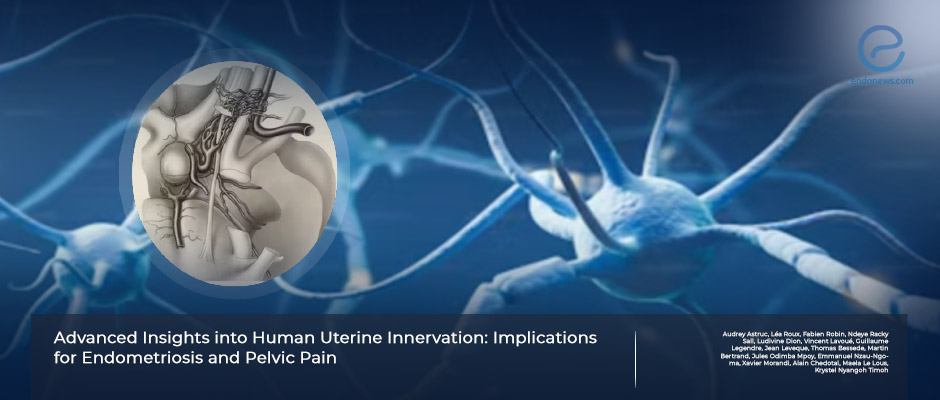Uterine innervation and its impact on endometriosis related pelvic pain.
Advancements in immunochemistry, fluorochromes, computer-associated anatomical dissection, and 3D reconstruction of uterine micro-innervation brought substantial progress in pelvic neuroanatomy. The complex uterine innervation and its interactions with uterine parts and layers are yet fully revealed. Austruc et al., from the…
Key Points Lay SummaryBenefits of Nerve-Sparing Hysterectomy
The retroperitoneal spread of endometriosis or cancer may involve pelvic autonomic nerves situated on the lateral aspects of uterosacral ligaments, vesicouterine ligaments, and medial aspects of parametria. During the conventional open hysterectomy operations, nerve-sparing excision is very difficult, simply because pelvic autonomic nerves…
Key Points Lay SummaryStudy Sheds Light on Physiological Processes Associated with Endometriosis
Sensory nerves play an important role in the development of endometriosis as well as fibrosis, confirms a study by Chinese researchers. A better understanding of physiological processes associated with the development of endometriosis can help researchers devise new ways to…
Key Points Lay SummaryEndometriosis that involves the nerves: how Radiologists can help
Endometriosis is a disease with variable clinical symptoms. While rare, nerve involvement by endometriosis may cause neurologic symptoms such as pelvic pain, muscle weakness, bowel and bladder incontinence, and paraplegia depending on the specific nerve involved. Thus, abdominal radiologists should…
Key Points Lay Summary
 By Selma Oransay
By Selma Oransay


 By Özge Özkaya
By Özge Özkaya

 By Murat Osman
By Murat Osman